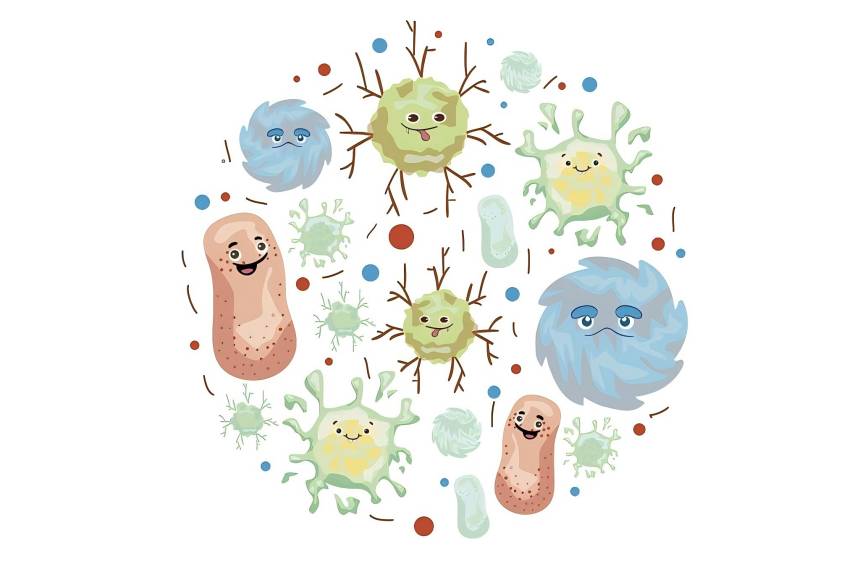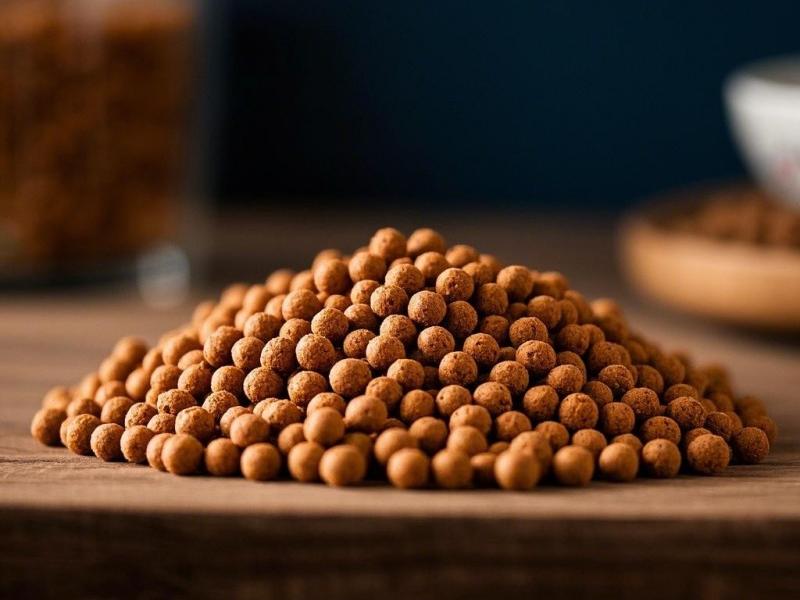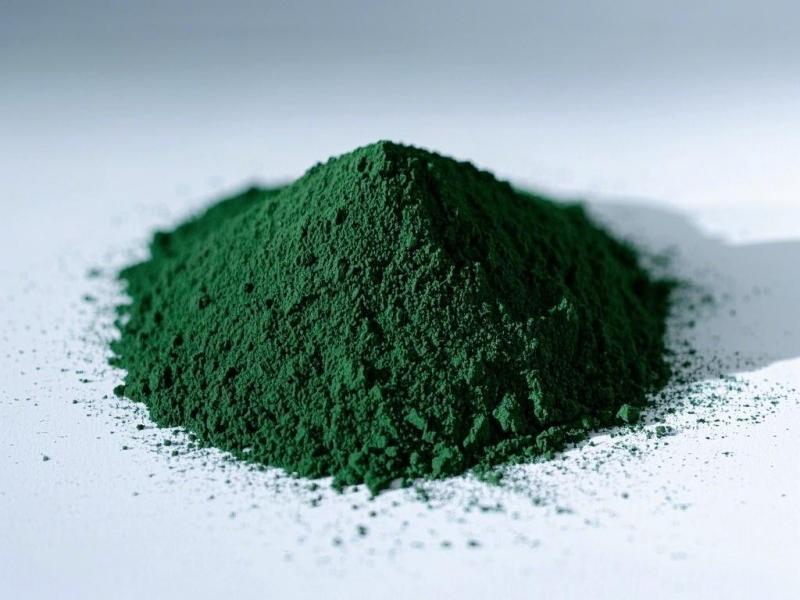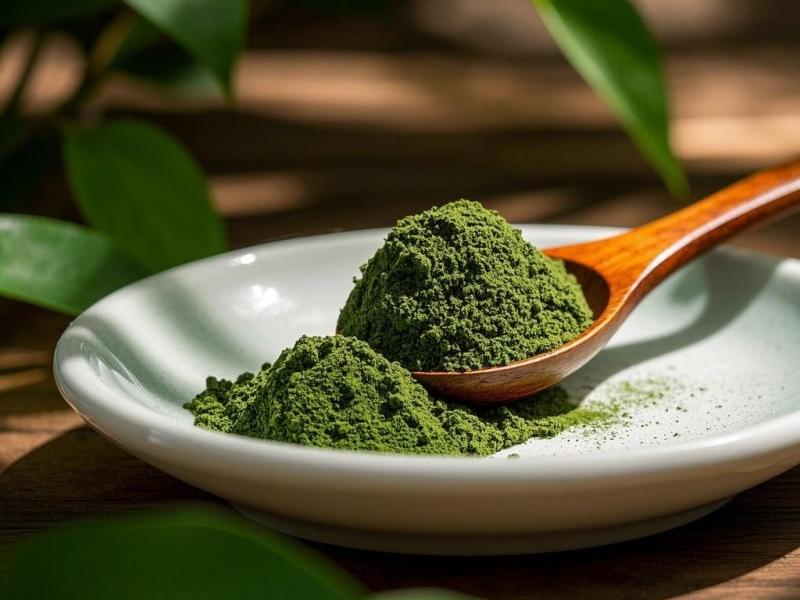Study on Spirulina and Gut Health
Spirulina platensis is part of the family of the dinoflagellates and occurs naturally in alkaline lakes. As a functional resource, spirulina platensis contains a variety of active ingredients such as vitamins, minerals, phenolic acids, β-carotene, proteins and tocopherols. The gut is considered to be the “second brain” of human health, and its microbial composition and function are crucial to human health. The human intestinal microbiota is a diverse and complex ecosystem that harbors thousands of microbial species. These microbial species co-evolve with their hosts and play an important role in health and disease [1,2]. However, modern lifestyles and an unhealthy diet have caused an imbalance in the intestinal flora to become common. In addition, intestinal inflammation and decreased immune function are also common problems. Therefore, it is particularly important to find a safe and effective way to maintain intestinal health.
Spirulina platensis has the effect of regulating the intestinal microbiota [3,4]. By regulating the intestinal flora homeostasis, spirulina can help improve digestive system function, strengthen the immune system, promote nutrient absorption, and reduce intestinal discomfort and gastrointestinal symptoms. It can also promote the growth of probiotics, inhibit the reproduction of harmful bacteria, and maintain the balance of intestinal microecology. A stable intestinal flora can improve the efficiency of food digestion, reduce toxin production, lower the risk of chronic inflammation, improve stool quality, and prevent constipation and diarrhea.
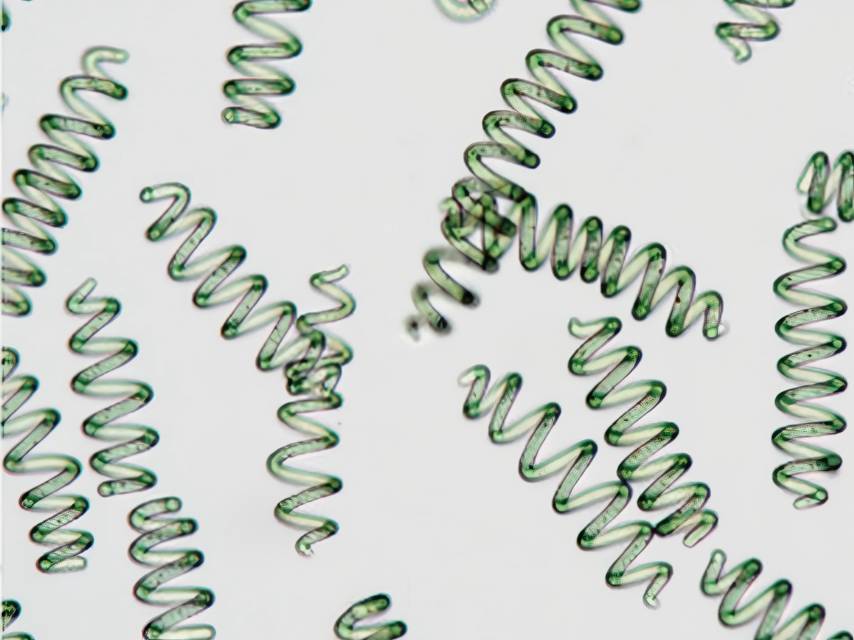
1 The nutritional composition of spirulina
Spirulina is a nutrient-rich algae that is widely used in the food and health supplement industries. It is a natural health food that is rich in protein, chlorophyll, vitamins, minerals and a variety of bioactive substances.
Spirulina contains 60% to 70% protein by dry weight and provides complete protein – it contains all essential amino acids, which account for almost half of the protein [5]. The protein in spirulina is not difficult to digest, even for the elderly who have difficulty absorbing complex proteins through the intestines and adhere to certain diets, because the cell wall of the algae is composed of mucopolysaccharides, which are simple sugars that are easy to digest and absorb [6].
Spirulina's lipid content is about 5% to 10% of its dry weight. Generally, it contains essential fats for human survival (such as γ-linolenic acid, linoleic acid and oleic acid), and free fatty acids will account for 70% to 80% of total lipids. These total lipids can be divided into a saponified portion that accounts for 83% of the total and an unsaponified portion that accounts for 17%. The unsaponified portion is mainly composed of paraffins, pigments, terpene alcohols and sterols [6].
Spirulina powder is a complete vitamin source. Like other seaweeds, it also has a very high vitamin B12 content, which is usually only found in foods of animal origin. Therefore, this algae may be a good food source for vegetarians. One of the richest dietary sources of pigments is spirulina, especially C-phycocyanin, which contains 14% iron [6]. Spirulina is also a good source of beta-carotene, with a content of about 700 to 1700 mg/kg, which, once absorbed, is biologically converted to vitamin A. The human requirement for vitamin A is about 1 mg/d, so 1 to 2 g of algae is sufficient to meet this requirement [5, 7], and they act as lipophilic antioxidants [5].
Another valuable pigment that can be obtained from spirulina is chlorophyll, which is present at concentrations of about 6.0–20.0 mg/kg dry weight [8]. Zepka et al. [9] reported the antimutagenic, chemoprotective, antioxidant, anti-inflammatory and antibacterial properties of chlorophyll, as well as its potential use as a photosensitizer. The most abundant inorganic nutrients in spirulina are iron, calcium and phosphorus. Spirulina is very rich in iron, with a content of about 580–1800 mg/kg, and does not contain phytates/oxalates that can chelate iron and reduce its absorption [10].
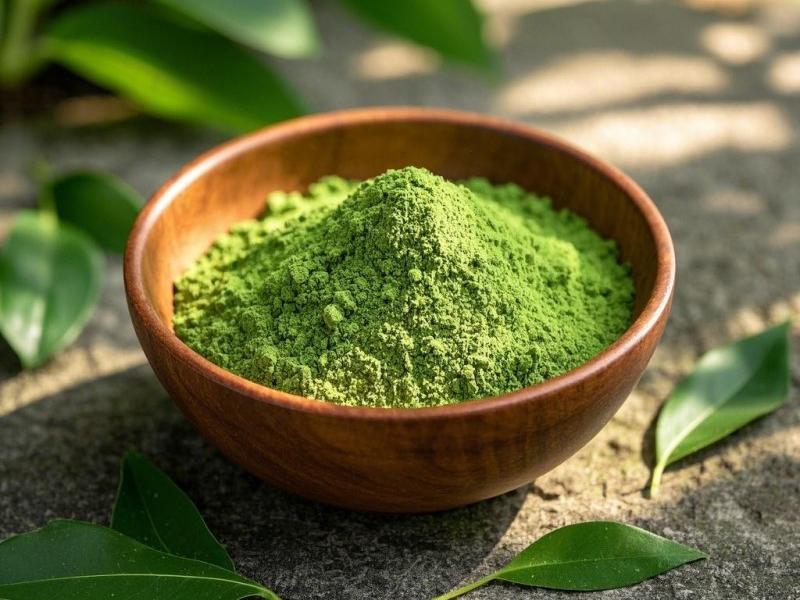
2 Intestinal health and balance of flora
The oral and salivary microbiota contains millions of microorganisms that are swallowed daily with our food. The intestinal microbiota of healthy individuals is dominated by strictly anaerobic microbial members of the phyla Firmicutes, Bacteroidetes, Actinobacteria and Proteobacteria. These microorganisms are responsible for performing essential functions to maintain the intestinal health of the host through the synthesis of metabolites that promote the regulation of various physiological processes, including immune homeostasis and the exclusion of potentially pathogenic microorganisms [11,12].
Intestinal homeostasis helps to prevent complications related to lipid and carbohydrate metabolism, including hyperlipidemia, hyperglycemia, and hepatic steatosis (liver damage) [13,14]. A healthy human microbiota is in a stable state, promoting the development of various metabolic pathways, such as the degradation of indigestible oligosaccharides in the intestine and participation in the metabolism of cholesterol and lipids [14,15]. However, the maintenance of microbiota homeostasis in the intestine is hindered by many factors, including gastric acidity, bile acid production, enzymes and antimicrobial proteins in the duodenum and beyond the digestive tract. With age, the composition of the intestinal flora changes due to external factors (antibiotic use, diet, physical and mental stress) and internal factors (genetic and immunological aging of the host), leading to an imbalance in the intestinal microbiota, for example, an increase in the Bacteroidetes phylum and a decrease in the Firmicutes phylum [11,12]. Many large studies have investigated the intestinal microbiome and its relevance for specific gastrointestinal diseases (e.g. inflammatory bowel disease [16], coeliac disease [17], irritable bowel syndrome [18]). Inflammatory bowel disease (typical inflammatory bowel disease) is associated with a deviation in the composition of the intestinal microbiota [19].
3 The role of spirulina in intestinal health
A high-fat diet (HFD) may lead to an imbalance in the intestinal microbiota. On the other hand, HFD is likely to increase the level of lipopolysaccharides in the feces and cause endotoxemia or low-grade systemic inflammation, which further damages peripheral tissues [4,20], leading to increased intestinal permeability, which in turn leads to a persistent circulation of low-grade inflammatory cytokines. Spirulina platensis can prevent metabolic inflammation caused by HFD and stimulate the growth of beneficial bacteria in vitro fecal cultures.
Yu et al. [4] showed that when rats were fed 3% Spirulina platensis for 14 weeks, not only did it reduce their body weight and visceral fat pad weight, it also reduced the levels of serum lipopolysaccharides and pro-inflammatory cytokines [1]. Spirulina platensis can significantly reduce the relative abundance of the Verrucomicrobia phylum and the Firmicutes/Bacteroidetes ratio in fecal samples from HFD-fed rats. Spirulina platensis significantly reduced intestinal inflammation, as indicated by a decrease in the expression of myeloid differentiation factor 88 (MyD88), Toll-like receptor 4 (TLR4), NF-kB (p65) and inflammatory cytokines. Spirulina platensis also improves the permeability of the intestinal mucosa by affecting the expression of tight junction proteins, thereby reducing damage to the intestinal barrier function [4].
Lu et al. [21] found in a mouse model of lung cancer that spirulina polysaccharides can regulate its intestinal microbiota, significantly changing the structure of the intestinal microbiota in tumor-bearing mice. Spirulina polysaccharides can increase the abundance of some beneficial bacteria, such as Bifidobacterium, Lactobacillus, Prevotella and Olsenella, while it reduces the abundance of some conditionally pathogenic bacteria, such as Bacteroides and Acinetobacter. Therefore, spirulina polysaccharides may maintain intestinal homeostasis by changing the abundance and composition of beneficial and pathogenic bacteria in the intestinal flora to achieve the purpose of anti-tumor [21].
Barros de Medeiros et al. [12] reported that Lactobacillus acidophilus (L. acidophilus, La5) and Lactobacillus acidophilus + Streptococcus platensis (L. acidophilus + S. platensis, Spi-La5) can actively regulate the intestinal microbiota, and the latter is more suitable for promoting the positive regulation of the microbiota in healthy individuals. The administration of La5 resulted in an increase in the abundance of the genera Bacteroides, Megamonas, Lactobacillus and Bifidobacterium increased in abundance, resulting in a decrease in ammonium ions. Spi-La5 administration increased the abundance of Actinobacillus, Rothia, Enterococcus, Bifidobacterium, Enterobacter and Clostridium [12].
The intestinal immune system plays an important role in the body's defence mechanisms, and the intestinal microbiota and the intestinal immune system are closely related. For example, the intestinal microbiota can increase the proliferation of IgA-producing plasma cells in the intestine [22], and mucosal IgA can enhance the homeostasis of the intestinal symbiotic microbiota [23]. Therefore, the beneficial effect of spirulina on intestinal immunity can in turn affect the intestinal microbiota, and vice versa. Satyaraj et al. [24] demonstrated that the addition of 0.2% spirulina powder to the diet of dogs significantly enhanced immunity and intestinal health. Spirulina increased faecal IgA levels after only 9 weeks of feeding, and this effect was maintained throughout the study. Compared to the control group, the intestinal microbiota of spirulina-fed dogs maintained higher stability after exercise of a certain intensity [24].
In addition to its role in intestinal flora regulation and immunomodulation, spirulina can also be used as a good drug carrier. In clinical settings, radiotherapy has been widely used in more than half of cancer patients [25]. During radiotherapy for solid tumors in the abdomen or pelvis, intestinal damage caused by high-dose radiotherapy can lead to gastrointestinal dysfunction, such as nausea, diarrhea, vomiting, bleeding, infection, perforation, and even death [26,27]. Amifostine (AMF) is a normal tissue-selective radioprotector, however, its oral application for intestinal radiation protection remains challenging.
Zhang et al. [27] constructed an oral delivery system using spirulina as a microcarrier for AMF by using a simple dehydration-rehydration synthesis strategy to obtain a high drug loading of AMF in spirulina. In this system, AMF can be slowly released into simulated intestinal fluid, showing comprehensive drug accumulation and effective radiation protection throughout the small intestine. This system is significantly superior to free drugs and their enteric capsules, preventing radiation-induced intestinal damage without affecting tumor regression, and prolonging survival. In addition, the use of spirulina is beneficial for the homeostasis of the intestinal microbiota after radiation and avoids the long-term toxicity of AMF [27].
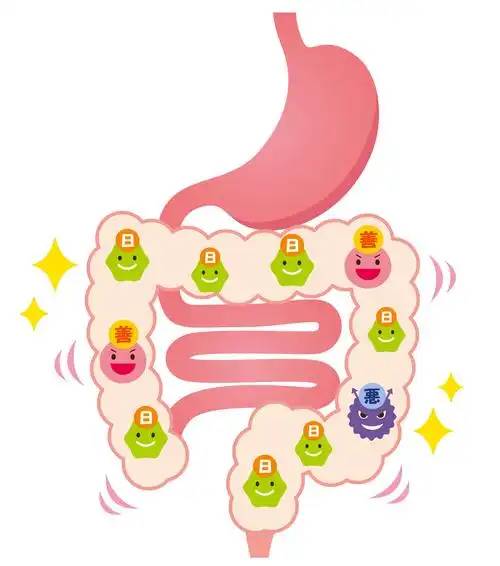
4 Conclusion
Spirulina is rich in nutrients, including protein, dietary fiber, vitamins and minerals, which play an important role in intestinal mucosal health and immune system function. Spirulina positively regulates the intestinal microbial composition, increases the abundance of beneficial bacteria and reduces the abundance of pathogenic bacteria, thereby improving intestinal immunity and thus promoting individual health. In addition, spirulina also acts as a carrier for amifostine. The amifostine-spirulina system has advantages over the amifostine drug alone and protects the normal intestines of cancer patients from radiation damage during radiation therapy.
However, it should be noted that there is currently relatively limited research on the role of spirulina in regulating intestinal health, and there are still some controversial issues that need to be resolved. For example, the optimal dosage and usage of spirulina still needs to be further studied and determined. In addition, different individuals may respond differently to spirulina, so individualized regulation strategies also need to be explored in depth.
Reference:
[1]GILBERT JA,BLASERM J,CAPORASO JG,et al.Current understanding of the human microbiome[J].Nature medicine,2018,24(4):392-400.
[2]FASSARELLA M,BLAAK E E,PENDERS J,et al.Gut microbiome stability and resilience:elucidating the response to perturbations in order to modulate gut health[J].Gut,2021,70(3):595-605.
[3]LI T T,TONG A J,LIUY Y,et al.Polyunsaturated fatty acids from microalgae Spirulina platensis modulates lipid metabolism disorders and gut microbiota in high-fat diet rats[J].Food and chemical toxicology:an international journal published for the British Industrial Biological Research Association,2019,131:110558.
[4]YU T,WANG Y,CHEN X,et al.Spirulina platensis alleviates chronic inflammation with modulation of gut microbiota and intestinal permeability in rats fed a high-fat diet[J].Journal of cellular and molecular medicine,2020,24(15):8603-8613.
[5]Gabriela G,Luis F,German C.NUTRITIONAL AND TOXICOLOGICAL ASPECTS OF SPIRULINA(ARTHROSPIRA)[J].Nutricion hospitalaria,2015,32(1):34-40.
[6]Z.KNA,Nawfal A,B.A A,et al.Trends and Technological Advancements in the Possible Food Applications of Spirulina and Their Health Benefits:A Review[J].Molecules,2022,27(17):5584-5584.
[7]GIREESH T,NAIR P P,SUDHAKARAN PR.Studies on the bioavailability of the provitamin A carotenoid,beta-
carotene,using human exfoliated colonic epithelial cells[J].The British journal of nutrition,2004,92(2): 241-245.
[8]RANGEL-YAGUI CDE 0,DANESI E D,DE CARVALHOJ C,et al.Chlorophyll production from Spirulina platensis: cultivation with urea addition by fed-batch process[J].Bioresource technology,2004,92(2):133-141.
[9]QUEIROZ ZEPKA L,JACOB-LOPES E,ROCA M.Catabolism and bioactive properties of chlorophylls[J].Current Opinion in Food Science,2019,26:94-100.
[10]WALTER P.Effects of vegetarian diets on aging and longevity[J].Nutrition reviews,1997,55(1 Pt 2):S61-5; discussion S5-8.
[11]COMAN V,VODNAR D C.Gut microbiota and old age:Modulating factors and interventions for healthy longevity[J].Experimental gerontology,2020,141:111095.
[12]BARROS DE MEDEIROS V P,SALGA?0MK,PIMENTELTC,et al.Spirulina platensis biomass enhances the proliferation rate of Lactobacillus acidophilus 5(La-5)and combined with La-5 impact the gut microbiota of medium- age healthy individuals through an in vitro gut microbiome model[J].Food research international(Ottawa, Ont),2022,154:110880.
[13]FOSTER M T,GENTILE C L,COX-YORK K,et al.Fuzhuan tea consumption imparts hepatoprotective effects and alters intestinal microbiota in high saturated fat diet-fed rats[J].Molecular nutrition&food research, 2016,60(5):1213-1220.
[14]LIT T,HUANG Z R,JIA R B,et al.Spirulina platensis polysaccharides attenuate lipid and carbohydrate metabolism disorder in high-sucrose and high-fat diet-fed rats in association with intestinal microbiota[J].Food research international(Ottawa,Ont),2021,147:110530.
[15]YANG CF,LAI S S,CHEN Y H,et al.Anti-diabetic effect of oligosaccharides from seaweed Sargassum confusum via JNK-IRSI/PI3K signalling pathways and regulation of gut microbiota[J].Food and chemical toxicology:an international journal published for the British Industrial Biological Research Association,2019,131:110562.
[16]LLOYD-PRICE J,ARZE C,ANANTHAKRISHNAN AN,et al.Multi-omics of the gut microbial ecosystem in inflammatory bowel diseases[J].Nature,2019,569(7758):655-662.
[17]LEONARD MM,VALITUTTIF,KARATHIAH,et al.Microbiome signatures of progression toward celiac disease onset in at-risk children in a longitudinal prospective cohort study[J].Proceedings of the National Academy of Sciences of the United States of America,2021,118(29).
[18]MARS RA T,YANG Y,WARD T,et al.Longitudinal Multi-omics Reveals Subset-Specific Mechanisms Underlying Irritable Bowel Syndrome[J].Cel1,2020,182(6):1460-1473.e17.
[19]DE VOs WM,TILG H,VAN HULM,et al.Gut microbiome and health:mechanistic insights[J].Gut,2022,71(5): 1020-1032.
[20]ANTONIOLI L,D'ANTONGIOVANNI V,PELLEGRINI C,et al.Colonic dysmotility associated with high-fat diet- induced obesity:Role of enteric glia[J].FASEB journal:official publication of the Federation of American Societies for Experimental Biology,2020,34(4):5512-5524.
[21]LU Y,PENG B,LIN Y,et al.Spirulina polysaccharide induces the metabolic shifts and gut microbiota change of lung cancer in mice[J].Current research in food science,2022,51313-1319.
[22]CRABBe PA,BAZIN H,EYSSEN H,et al.The normal microbial flora as a major stimulus for proliferation of plasma cells synthesizing IgA in the gut.The germ-free intestinal tract[J].International archives of allergy and applied immunology,1968,34(4):362-375.
[23]SUZUKI K,MEEK B,DOI Y,et al.Aberrant expansion of segmented filamentous bacteria in IgA-deficient gut[J].Proceedings of the National Academy of Sciences of the United States of America,2004,101(7): 1981-1986.
[24]SATYARAJ E,REYNOLDS A,ENGLER R,et al.Supplementation of Diets With Spirulina Influences Immune and Gut Function in Dogs[J].Frontiers in nutrition,2021,8:667072.
[25]ALLEN C,HER S,JAFFRAY D A.Radiotherapy for Cancer:Present and Future[J].Advanced drug delivery reviews, 2017,109:1-2.
[26]NOVAK JM,COLLINS JT,DONOWITZ M,et al.Effects of radiation on the human gastrointestinal tract[J].Journal of clinical gastroenterology,1979,1(1):9-39.
[27]ZHANG D,ZHONG D,OUYANG J,et al.Microalgae-based oral microcarriers for gut microbiota homeostasis and intestinal protection in cancer radiotherapy[J].Nature communications,2022,13(1):1413.


 English
English French
French Spanish
Spanish Russian
Russian Korean
Korean Japanese
Japanese